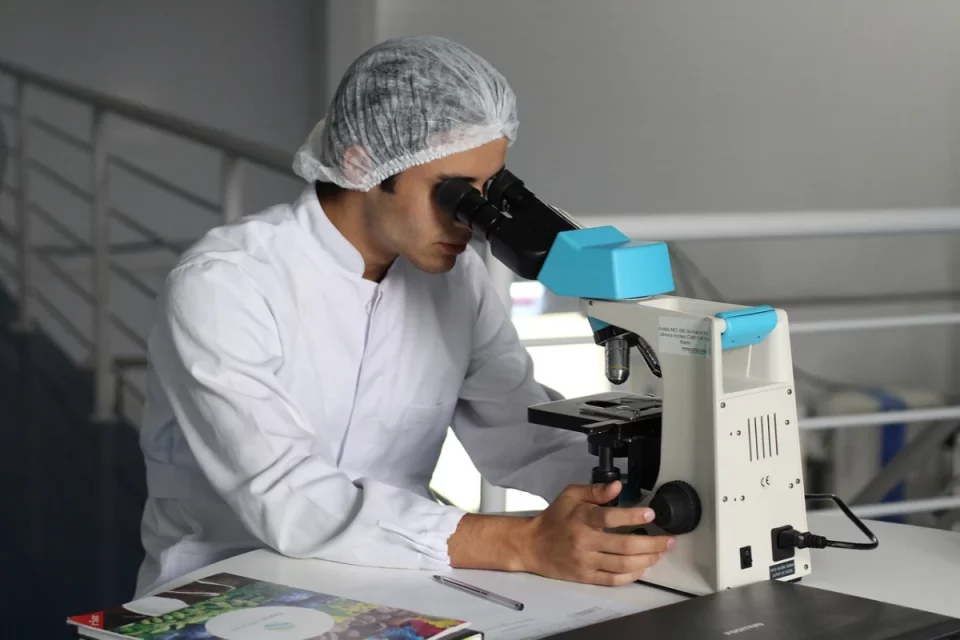An analogue of growth hormone-releasing hormone (GHRH), Sermorelin, is used in research settings to potentially measure the amount of growth hormone secreted.
Researchers are interested in it due to an alleged potential to increase bone density, decrease scarring, combat the symptoms of dementia, and lessen the frequency of seizure activity.
Table of Contents
What Exactly Is the Sermorelin Peptide?
In recent years, a small number of growth hormone-releasing hormone (GHRH) analogs have been discovered.
These analogs were initially created with the hopes of maintaining properties of natural GHRH while avoiding any potential negative impacts.
One of these analogs is called Sermorelin. Sermorelin has been reviewed in research studies, measuring the amount of growth hormone secreted in the bodies of research models.
However, the peptide is of added relevance because of the following purported properties:
- It may lessen the likelihood of scarring following heart attacks,
- It may increase bone density
- It may enhance kidney function
- It may manage symptoms of dementia
- It may decrease instances of seizure
Sermorelin and the Heart
A heart attack poses an immediate risk to life. Still, it may also result in long-term impairment due to heart failure, irregular cardiac conduction (arrhythmias), impaired physical capacity, discomfort, and other issues.
Many of these are induced due to cardiac remodeling, which happens when damage is done to myocytes (heart muscle cells).
Scarring may result from cardiac remodeling in the region of damage caused by a heart attack and in the parts not harmed around the afflicted area.
Research has suggested that preventing this remodeling from occurring may greatly improve results immediately after a heart attack and years later.
This remodeling may cause various long-term complications, and preventing it from occurring could significantly improve outcomes.
In 2016, research on pigs suggested that Sermorelin may potentially lower remodeling risks. As suggested by the findings of the study, Sermorelin:
- May lower the number of cells that die in the heart’s cardiomyocytes
- May stimulate the formation of components of the extracellular matrix that are necessary for proper healing
- May stimulate the development of new blood vessels to supply the injured tissue
- May inhibit the synthesis of chemicals that are responsible for harmful inflammation
In research settings, the reported potential impacts of Sermorelin may be considered an advance in diastolic function, a decrease in scar size, and an increase in capillary development.
Studies are now being performed to explore the potential efficacy of Sermorelin in mitigating certain symptoms of cardiac disease, including heart failure and even diseases of the valves in the heart.
Sermorelin and Epilepsy
Gamma-aminobutyric acid, often known as GABA, is a signaling molecule in the central nervous system.
It is known to lower the amount of electrical movement in the spinal cord and the amount of electrical excitability in the central nervous system.
Various anticonvulsant substances act by either elevating GABA levels in the central nervous system or attaching to GABA receptors and mimicking the effects of the neurotransmitter GABA. This is how they can control seizures.
Recent research conducted by scientists included the presentation of GHRH analogs, such as Sermorelin, to epileptic mice to investigate the potential impact of peptides like these on seizure activity.
It has been hypothesized that activating GABA receptors may reduce the frequency and severity of seizures caused by GHRH mimics.
This is a fairly recent discovery and a topic that is now the subject of active study.
Sermorelin Peptide and Sleep
Orexin is a powerful neurochemical that is generated by certain neurons in the brain.
There is sufficient data to suggest that Orexin may contribute to regulating sleep cycles.
It is also widely speculated that most processes connected with development and healing, closely linked to the release of growth hormones, may occur during sleep.
According to research, an intact GHRH axis is essential for adequate Orexin production and function.
This suggests that the finding is not a coincidence. In addition, the study purports that increasing the level of Sermorelin and other GHRH agonists may increase the amount of secreted Orexin.
Sermorelin Peptide and Growth Hormone
Sermorelin is a growth hormone-releasing hormone derivative, and as such, research suggests it may exhibit similar proclivities to natural GH.
It has been suggested that these effects may include increasing muscle mass, promoting long-bone development, and lowering adipose tissue.
Researchers interested in Sermorelin for sale are advised to visit Core Peptides for the highest-quality research compounds. Please note that none of the substances mentioned in this article have been approved for human use.
References
[i] L. L. Bagno et al., “Growth Hormone–Releasing Hormone Agonists Reduce Myocardial Infarct Scar in Swine With Subacute Ischemic Cardiomyopathy,” J. Am. Heart Assoc. Cardiovasc. Cerebrovasc. Dis., vol. 4, no. 4, Mar. 2015.
[ii] R. M. Kanashiro-Takeuchi et al., “New therapeutic approach to heart failure due to myocardial infarction based on targeting growth hormone-releasing hormone receptor,” Oncotarget, vol. 6, no. 12, pp. 9728–9739, Mar. 2015.
[iii] S. Tang et al., “Interactions between GHRH and GABAARs in the brains of patients with epilepsy and in animal models of epilepsy,” Sci. Rep., vol. 7, Dec. 2017.
[iv] B. S. Shepherd et al., “Endocrine and orexigenic actions of growth hormone secretagogues in rainbow trout (Oncorhynchus mykiss),” Comp. Biochem. Physiol. A. Mol. Integr. Physiol., vol. 146, no. 3, pp. 390–399, Mar. 2007.
[v] R. F. Walker, “Sermorelin: A better approach to management of adult-onset growth hormone insufficiency?,” Clin. Interv. Aging, vol. 1, no. 4, pp. 307–308, Dec. 2006.
[vi] S. T. Wahid, P. Marbach, B. Stolz, M. Miller, R. A. James, and S. G. Ball, “Partial tachyphylaxis to somatostatin (SST) analogues in a patient with acromegaly: the role of SST receptor desensitisation and circulating antibodies to SST analogues,” Eur. J. Endocrinol., vol. 146, no. 3, pp. 295–302, Mar. 2002.

